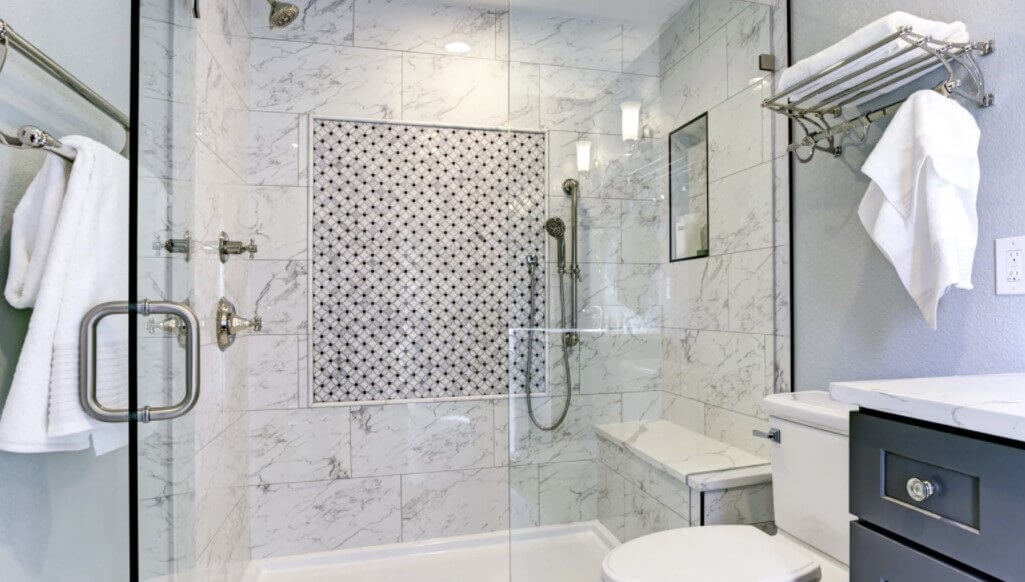When cleaning the bathroom, most people clean all the spaces and plumbing installations then forget the shower faucet handles. As a result, calcium, soap scum, mold, and other grime build up and give the handles a gross appearance.
This makes it seem like your entire bathroom is dirty and doesn’t get a good, regular clean-up — which is unfortunate, considering how easy it is to clean bathroom faucet handles.
Why should you clean your shower faucet handles?
Before we get into how to clean your shower faucet handle, you need to understand why it’s important.
- First, cleaning makes the faucet presentable.
- Secondly, it will serve you for a long time since you won’t have to worry about destructive agents like rust (for metallic faucet handles).
- Third, the handle’s longevity helps you to save on replacement expenses, seeing as the high-quality faucet handles don’t come cheap.
- Lastly, cleaning shower faucet handles helps you to prevent microbial growth that can damage the faucet, produce a bad odor, or put your health at risk.
How you clean a faucet handle varies depending on its finish. For example, the detergent you use to clean a metal finish wouldn’t be ideal for a plastic faucet handle. You should check the handle’s user manual for the recommended cleaning products.
Read Also: The best handheld showerheads for low water pressure
That said, here is how to clean the different shower faucet handles finishes
1. How to clean a metal shower faucet
The metal faucet finishes that you’re likely to come across are brushed nickel, copper, brass, and chrome shower fixtures. They’re quite easy to clean since you don’t have to open them to deep clean.
You will need the following tools to clean a metal faucet handle:
- Dish soap
- White vinegar
- Baking soda
- Toothbrush
The steps involved are:
Using a dish soap
- For a simple clean-up, mix the dish soap with warm water and use a clean cloth to rub the mixture on the handle.
- Rinse with clean water and dry it off with a clean, dry cloth.
Using white vinegar
- When dealing with grime, corrosion, and other tough stains, you need to clean the faucet head with vinegar.
- Mix a 50:50 ratio of white vinegar and water in a bowl or spray bottle.
- Dip a clean piece of cloth in the mixture and apply it on a small area of the handle to ensure it’s not reactive.
- If it doesn’t react with the metal finish, apply the mixture on the handle and scrub to eliminate the dirt build-up.
- You can even soak the cloth in the vinegar mixture then wrap it around the faucet handle for 10-15 minutes.
- When you finish, use another clean, wet cloth to wipe the handle.
- You could let it dry on its own or use a dry cloth.
Using baking soda and a toothbrush
If you were wondering about how to clean corroded shower handles, vinegar and baking soda are your best solutions. For the latter, here are the steps to follow:
- Sprinkle baking soda on the corroded surface.
- Dip the old toothbrush in water then use it to scrub the faucet handle.
- You should open the interior and scrub the grime off.
- Rinse it off with clean water and the surface will be sparkling.
How to clean plastic faucet handles

Cleaning plastic faucet handles requires a little more effort because they tend to accumulate more grime than metal handles. So, without wasting much time, follow this procedure.
First, get the tools below:
- Screwdriver
- Dish soap
- Vinegar
- Spray bottle
- Old toothbrush
- Washcloth/sponge
- Hot water
Step 1: Remove the cap and cover
First, mix soapy water and baking soda/vinegar in a bowl and let it sit on the side. Next, use the screwdriver or any tool with a thin edge to remove the cap from the knob.
For some faucet handles, there’ll be a screw holding the knob in place. Unscrew it to free the knob then put all the parts you’ve removed in the bowl to soak. This will loosen up the dirt build-up.
Read Also: The best automatic shower cleaners
Step 2: Clean the stem and handle
You can start cleaning the stem of the faucet handle while the other parts soak. If there is little dirt, you should simply wipe it off with a washcloth dipped in soapy water. But, with excessive or complex grime build-up or corrosion, you’ll need vinegar or baking soda.
For vinegar, mix it with an equal amount of water in a spray bottle then spray the stem and scrub thoroughly with a toothbrush. If you decide to use baking soda, put a small amount on the area you want to clean, dip your toothbrush in water then start scrubbing. Use Q-tips to clean the areas a toothbrush can’t reach.
Once you finish, rinse with hot water and wipe with a dry cloth. Check the items in the bowl and start scrubbing the dirt build-up off. Rinse them with clean water and allow them to dry.
Step 3: Screw the handle back
The last step is to screw the handle back in position and reattach the cap. You can apply grease or jelly to prevent the handle from jamming on the post.
With that, you now know how to clean a clear plastic faucet handle. If you do everything right, the handle should be as clean as new.
Clean shower faucet handles complement the aesthetics of your bathroom and they’re safe to use too. So, next time you’re cleaning the bathroom, remember to remove calcium and grime build-up in the faucet handles. After all, it doesn’t take much time.

